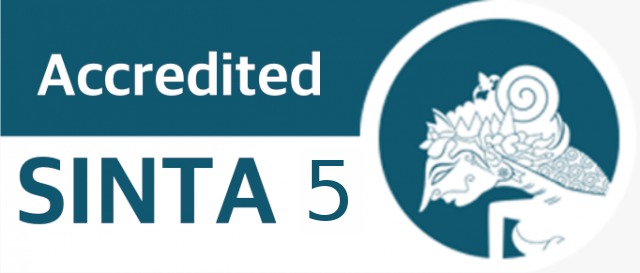Analisis Sentimen Opini Publik Terhadap Cyberbullying Pada Komentar Instagram Menggunakan Multinomial Naive Bayes
DOI:
https://doi.org/10.61306/jnastek.v4i4.157Kata Kunci:
Sentiment Analysis, Cyberbullying, Instagram, Multinomial, Naïve BayesAbstrak
This study aims to evaluate the effectiveness of a sentiment classification model using the Naïve Bayes algorithm on Instagram comment data. The main focus of this research is to measure the performance of the model in terms of accuracy, precision, recall, and F1-score. The data used in this study includes 400 Instagram comments that have been labeled with negative and positive sentiments. Data pre-processing involved case folding, tokenization, stopword removal, and stemming, followed by TF-IDF weighting to measure the importance of each word. The data was divided into 80% for training and 20% for testing. The Naïve Bayes model was then applied to the test data to predict sentiment. The evaluation results show that the model achieved an accuracy of 86.25%, with a precision of 85.56%, recall of 86.46%, and F1-score of 85.88%. For the negative class, the precision reached 91%, recall 85%, and F1-score 88%, while for the positive class, the precision was 80%, recall 88%, and F1-score 84%. These findings show that the Naïve Bayes model is effective in classifying the sentiment of Instagram comments and provides useful insights in understanding public sentiment towards the issue of cyberbullying
Unduhan
Referensi
M. I. H. A. D. Akbari, A. Novianty, and C. Setianingsih, “Analisis Sentimen Menggunakan Metode Learning Vector Quantization,” e-Proceeding Eng., vol. 4, no. 2, p. 2283, 2017, [Online]. Available: https://openlibrary.telkomuniversity.ac.id/pustaka/files/135356/jurnal_eproc/analisis-sentimen-menggunakan-metode-learning-vector-quantization.pdf
W. Athira Luqyana, I. Cholissodin, and R. S. Perdana, “Analisis Sentimen Cyberbullying pada Komentar Instagram dengan Metode Klasifikasi Support Vector Machine,” J. Pengemb. Teknol. Inf. dan Ilmu Komput., vol. 2, no. 11, pp. 4704–4713, 2018, [Online]. Available: http://j-ptiik.ub.ac.id
M. S. Mustafa, M. R. Ramadhan, and A. P. Thenata, “Implementasi Data Mining untuk Evaluasi Kinerja Akademik Mahasiswa Menggunakan Algoritma Naive Bayes Classifier,” Creat. Inf. Technol. J., vol. 4, no. 2, p. 151, 2018, doi: 10.24076/citec.2017v4i2.106. DOI: https://doi.org/10.24076/citec.2017v4i2.106
N. A. Rakhmawati, R. B. Waskitho, D. A. Rahman, and M. F. A. U. Nuha, “Klasterisasi Topik Konten Channel Youtube Gaming Indonesia Menggunakan Latent Dirichlet Allocation,” J. Inf. Eng. Educ. Technol., vol. 5, no. 2, pp. 78–83, 2021, doi: 10.26740/jieet.v5n2.p78-83. DOI: https://doi.org/10.26740/jieet.v5n2.p78-83
S. Khairunnisa, A. Adiwijaya, and S. Al Faraby, “Pengaruh Text Preprocessing terhadap Analisis Sentimen Komentar Masyarakat pada Media Sosial Twitter (Studi Kasus Pandemi COVID-19),” J. Media Inform. Budidarma, vol. 5, no. 2, p. 406, 2021, doi: 10.30865/mib.v5i2.2835. DOI: https://doi.org/10.30865/mib.v5i2.2835
N. Nofiyani and W. Wulandari, “Implementasi Electronic Data Processing Untuk meningkatkan Efektifitas dan Efisiensi Pada Text Mining,” J. Media Inform. Budidarma, vol. 6, no. 3, p. 1621, 2022, doi: 10.30865/mib.v6i3.4332. DOI: https://doi.org/10.30865/mib.v6i3.4332
Rayuwati, Husna Gemasih, and Irma Nizar, “IMPLEMENTASI AlGORITMA NAIVE BAYES UNTUK MEMPREDIKSI TINGKAT PENYEBARAN COVID,” Jural Ris. Rumpun Ilmu Tek., vol. 1, no. 1, pp. 38–46, 2022, doi: 10.55606/jurritek.v1i1.127. DOI: https://doi.org/10.55606/jurritek.v1i1.127
A. Rahman and A. Doewes, “Online News Classification Using Multinomial Naive Bayes,” J. Ilm. Teknol. dan Inf., vol. 6, no. 1, pp. 32–38, 2017, [Online]. Available: www.kompas.com
M. K. Maulidina, “Analisis Sentimen Komentar Warganet Terhadap Postingan Instagram Menggunakan Metode Naive Bayes Classifier dan TF-IDF,” Naskah Publ. Univ. Teknol. Yogyakarta, pp. 1–15, 2020.
N. G. Ramadhan and F. D. Adhinata, “Sentiment analysis on vaccine COVID-19 using word count and Gaussian Naïve Bayes,” Indones. J. Electr. Eng. Comput. Sci., vol. 27, no. 1, pp. 1765–1772, 2022, doi: 10.11591/ijeecs.v26.i3.pp1765-1772. DOI: https://doi.org/10.11591/ijeecs.v26.i3.pp1765-1772
Nikmatun, I. Alvi, Waspada, and Indra, “Implementasi Data Mining Untuk Klasifikasi Masa Studi Mahasiswa Menggunakan Algoritma K-Nearest Neighbor,” J. SIMETRIS, vol. 10, no. 2, pp. 421–432, 2019.
D. Normawati and S. A. Prayogi, “Implementasi Naïve Bayes Classifier Dan Confusion Matrix Pada Analisis Sentimen Berbasis Teks Pada Twitter,” J. Sains Komput. Inform. (J-SAKTI, vol. 5, no. 2, pp. 697–711, 2021.
M. Luthfi Bangun Permadi and R. Gumilang, “Penerapan Algoritma CNN (Convolutional Neural Network) Untuk Deteksi Dan Klasifikasi Target Militer Berdasarkan Citra Satelit,” J. Sos. Teknol., vol. 4, no. 2, pp. 134–143, 2024, doi: 10.59188/jurnalsostech.v4i2.1138. DOI: https://doi.org/10.59188/jurnalsostech.v4i2.1138
A. Nugroho and Y. Religia, “Analisis Optimasi Algoritma Klasifikasi Naive Bayes menggunakan Genetic Algorithm dan Bagging,” J. RESTI (Rekayasa Sist. dan Teknol. Informasi), vol. 5, no. 3, pp. 504–510, 2021, doi: 10.29207/resti.v5i3.3067. DOI: https://doi.org/10.29207/resti.v5i3.3067
Diterbitkan
Cara Mengutip
Terbitan
Bagian
Lisensi
Hak Cipta (c) 2024 Stephanie, Hafidz Irsyad

Artikel ini berlisensiCreative Commons Attribution-ShareAlike 4.0 International License.
HAK CIPTA
Hak cipta atas artikel apapun pada Jurnal Nasional Teknologi Komputer (JNASTEK) dipegang penuh oleh penulisnya dibawah lisensi Creative Commons Attribution-ShareAlike 4.0 International License.
1. Penulis mengakui bahwa Jurnal Nasional Teknologi Komputer (JNASTEK) berhak sebagai yang mempublikasikan pertama kali dengan lisensi Creative Commons Attribution-ShareAlike 4.0 International License - CC BY-SA.
2. Penulis dapat memasukan tulisan secara terpisah, mengatur distribusi non-ekskulif dari naskah yang telah terbit di jurnal ini kedalam versi yang lain (misal: dikirim ke respository institusi penulis, publikasi kedalam buku, dll), dengan mengakui bahwa naskah telah terbit pertama kali pada Jurnal Nasional Teknologi Komputer (JNASTEK).
LISENSI
Jurnal Nasional Teknologi Komputer (JNASTEK) diterbitkan berdasarkan ketentuan Creative Commons Attribution-ShareAlike 4.0 International License. Lisensi ini mengizinkan setiap orang untuk menyalin dan menyebarluaskan kembali materi ini dalam bentuk atau format apapun, menggubah, mengubah, dan membuat turunan dari materi ini untuk kepentingan apapun, termasuk kepentingan komersial, selama mereka mencantumkan kredit kepada Penulis atas ciptaan asli.



















